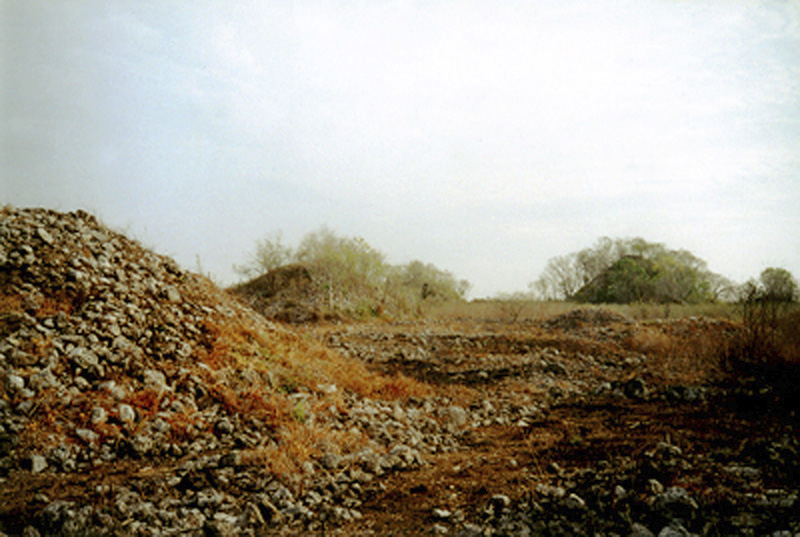The corn fields and pasture lands of Chunchucmil are filled with rubble mounds - the remains of house platforms and temples of the ancient Maya. This region was once the site of one of the largest Mayan cities. An ongoing archaeological project has been mapping the site of Chunchucmil for over five years, and has not yet been able to discover where the city stops. Their map of the ancient settlement currently covers over 6.5 square kilometers, territory owned by at least five separate communities.
The Chunchucmil region was first settled by around 300 B.C.E. but flourished during the Early and Late Classic periods C.E. 250-900. The site is unique in its layout, as every home is found within large yards bounded by boulders. This practice of marking yards with stone fences is common in Yucatán today, but was not previously thought to extend back to the Classic period. Even more fascinating, the mapping project has found that the walls join to form small streets for foot traffic throughout the city.
The ancient inhabitants of Chunchucmil were very concerned about delimiting their territory from their neighbors. This may have been because, in addition to being one of the largest Mayan sites, Chunchucmil was once one of the most densely populated sites in the Mayan area. It is estimated that the urban core of Chunchucmil may cover 14 square kilometers, and contain nearly 600 structures per square kilometer, creating population estimates as high as 46,650 inhabitants for just the urban core.
The city likely thrived as a trade center. It was strategically located at the edge of western resources (wetland products and salt pans), and was likely tied into a vigorous maritime canoe trade route that went right by Celestún bringing products in from central Mexico and Guatemala. Archaeologists have found an extremely high number of knives made from obsidian (volcanic glass) that came from areas as far away as Mexico City.
With so many people living next to each other, and a steady stream of foreign traders, it is no wonder that the inhabitants of Chunchucmil were so concerned with enclosing their yards and marking footpaths through their neighborhoods. In the end, their fears may have been validated. During their final days, the remaining inhabitants of Chunchucmil must have known they were threatened, as they hastily built a defensive wall around a small portion of downtown. It was constructed by ripping stones away from houses and fences. This wall was never completed on the city's western side, and may mark the city's demise at the hands of an army that arrived too soon.

